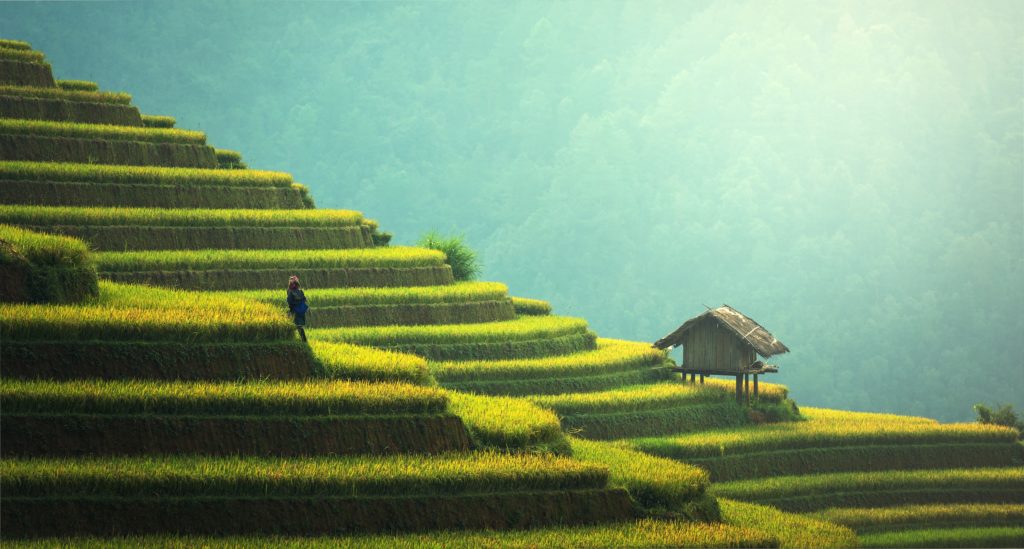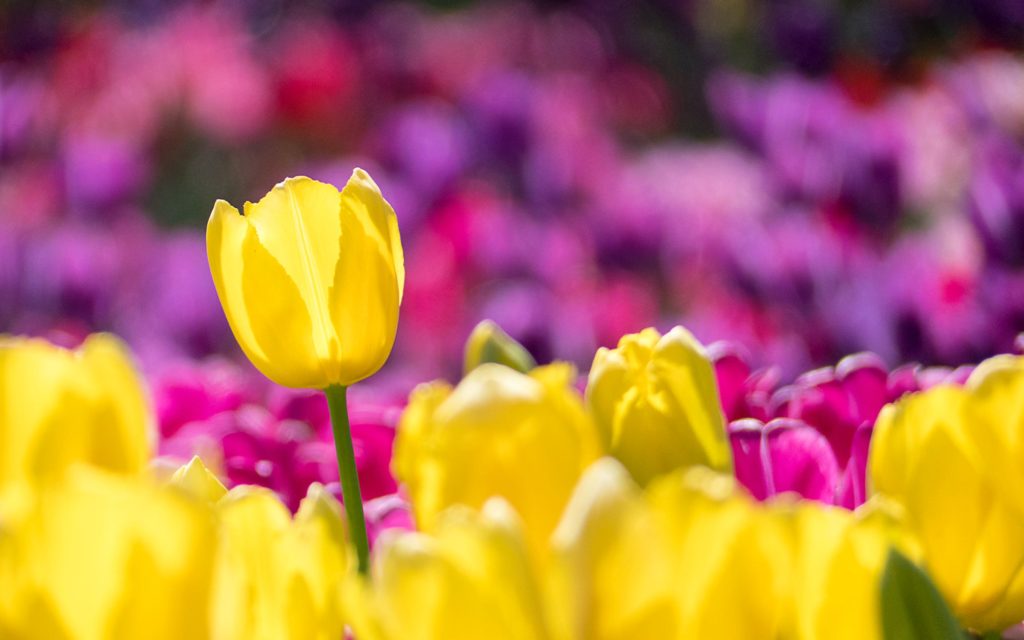
Any maintenance or asset manager knows that the longevity of assets is critically dependent on how well they are maintained. And you don’t have to be a maintenance manager to know that your car needs regular servicing. It is kind of obvious! Yet, when it comes to the important public infrastructure on which we all depend, maintenance is considered dispensable and is the first to be cut in times of financial stringency.
It is all to do with how we account for infrastructure assets. Below is the problem – and how we can overcome it using your asset management plan and condition based depreciation (CBD).
The Problem
It pays to know a little history. When government departments and agencies adopted accrual accounting practices and had to bring infrastructure assets to account for the first time, (In Australia, from 1989) naturally they turned to the private sector, where this had been the practice for many years. And this is where the first problem arose since private sector assets such as plant and machinery are depreciated over their predetermined lifespan until they reach zero or some predetermned salvage value and then they are completely replaced.
Infrastructure assets are different. This does not happen with infrastructure assets which can be kept in service for an indefinite time by piecemeal, if somewhat lumpy, component renewal. What is the age of an asset which may have some components 100 years old and others that were renewed yesterday? What is the life of an asset that can be kept in service as long as you want it to? These are unanswerable questions. They go to the heart of the difference between infrastructure and non-infrastructure assets and require a different accounting approach.
However when infrastructure assets were first brought to account, there was no alternative accounting approach for infrastructure assets, so rather than account for the entire infrastructure system, it was decided to assign each component a definite life and depreciate it as if it were an independent asset. It seemed a practical solution to a difficult problem. But in the process it completely ignored the key characteristic of infrastructure assets which is the interdependence of the components, where the life of a component, and thus the need to renew, is dependent on the other components with which it interacts. In other words, the life of components is indefinite, as is the life of the system as a whole. This does not mean infinite! It just means that you cannot define a life of a component until it reaches the stage of renewal. So depreciation in this case doesn’t work.
You will also notice something else about this approach. The economic life of any asset, as we stated at the beginning, depends on how well it is maintained, and yet maintenance does not feature in this accounting process. This is what makes it so easy for organisations to cut maintenance, since cutting maintenance does not affect the life of the asset, at least not in the accounting system – only in the real world!
The Solution
We need a better system, one that takes equal account of maintenance (minor and major) and renewal, i.e.everything that we need to spend to maintain the functionality of the asset. (In practice ‘maintenance’ and ‘renewal’ are really just different points on a continuum.)
Why do we depreciate assets at all? It is so that we can represent reduction in asset value in any particular period (asset value = its store of future services)
Is there a better way of doing this that recognises the distinct character of infrastructure assets? There is! What better way can there be of valuing the using up of asset services than the cost of making it good again? This is what is called Condition Based Depreciation (CBD). And it is available to any organisation that has a sound, and audited, AM plan as a costless spinoff. Put simply, the condition assessment of your assets that tells you what you need to spend over the planning period to maintain service function and that is in your AM Plan. It covers maintenance, minor and major and renewal and is the cost of making good the consumption of the asset over that period. You choose your planning period and it is updated on a rolling annual basis. The cost of ‘making good’ over the planning period is then expressed as an annuity to give you an annual cost and is the best estimate of real depreciation.
Second history lesson: When the UK water industry was being privatised in the early 1980s the argument was put forward that their assets should not be depreciated because the assets were continously maintained. This was rightly rejected by the accounting profession who said, in effect, ‘prove it’ and that is what a sound, audited AM plan does. Unfortunately some do not recognise the distinction between this and the AM plan backed CBD.
CBD was introduced in 1993 and has been well received by maintenance and asset managers and by practising accountants. It was adopted by the NSW Roads authority and by about a half of NZ’s councils for about ten years (until their accounting society called a halt). It is even provided as the ‘modified’ approach in GASB 34, the standard that introduced accrual accounting into the USA in 1999 but it was rejected by the Accounting Standards Board in 2004 and nothing much happened for the next 13-14 years!
Now it is back into contention because of problems with asset valuation giving depreciation figures that are artificially high and causing councils to be deemed non-viable. These councils are now scrambling to make cuts to their budget, eliminating services and sacking staff – and all at a time of Covid 19! So fictional figures are giving rise to real – and negative – physical effects. We can do better, much better!
Would CBD help bring your maintenance to the fore?
Extra references on CBD
Condition based depreciation for infrastructure assets, 1993
Depreciation of infrastructure assets
Condition based depreciation – the questions
- Extra information is provided here.
- Ask any questions you like and I will answer all of them.
To ask questions and to find out more about a national forum to develop support for adoption of CBD, use the comments section below. (There is global interest in this subject, so we might extend it to a global forum.)

The Innovation Delusion: How Our Obsession with the New has Disrupted the Work That Matters Most, Lee Vinsel and Andrew L Russell (September 2020)
Is this the first ‘popular’ book on Asset Management & Infrastructure Decisions? You wouldn’t necessarily know from the title.
But maintainers and asset managers are the, well, not heroes here: Vinsel and Russell describe ‘infrastructurers’ as something better than heroes. ‘The people who care about things’, as Lou Cripps puts it. And infrastructure in terms of human rights.
The book is a sustained attack on ‘bright, shiny new things’, especially when they really are not worthy of the name innovation, and when they will land communities in debt and ‘deferred maintenance’ for many years.
“Although you wouldn’t know it from histories that fixate on innovation and inventors, much of human history is, in fact, stories of stability: of how societies coordinate labor to maintain the large-scale public systems we’ve relied on since ancient times.”
But the authors are not simply academics, or popularisers. With Jessica Myerson, the authors have set up The Maintainers, https://themaintainers.org/connect. Their vision is:
“Through collaborative efforts across an interwoven network of communities, we pursue our mission of maintaining self and society through reflection, research, and advocacy in the hopes of achieving a more caring and well-maintained world.”
The book itself is a good read, using the current ‘popular’ non-fiction style of stories around individuals: everything you’ve ever worried about with poor rail track maintenance and failing water systems, and some good people trying to sort them.
I suspect it’s generally true that, when you know the inside story, things are not always quite as simple as written. I was a ‘fly on the wall’ at PG&E over the time of Camp Fire, and I don’t buy that wildfires should be blamed on ‘somebody else’, or one company’s profits alone, for example.
But, with honourable mentions for reliability engineers, Ursula K Le Guin, Melinda Hodkiewicz, and even ISO 55000 – and even computerised maintenance management systems! – this is my kind of territory.
Your reviews of it are most welcome here.
And what do you think about essential infrastructure as a basic human right?

In the last post I suggested that it might be time we changed our thinking on major issues like nuclear disarmament. But perhaps it is also time we changed our ideas on how we try to convince anyone to change anything!
I am indebted to Kerry McGovern for the following idea. She spoke of a friend who had argued that when introducing a new and controversial idea, 3% of the population are already of this opinion and do not need you to tell them, 7% are almost there and can be easily convinced, and about 30% recognise that they don’t know enough but are prepared to find out, the next 30% are too busy doing other things, and the last 30% are going to oppose you no matter what. Her advice is forget that bottom 60% and concentrate first on networking with the 3%, bringing in the 7% and then, as a group addressing the next 30%. I don’t know the source of the figures but the general idea is attractive. Moreover, working on these figures, once we have captured the 37%, assuming that the middle ‘busy’ 30% are neutral, we now have a majority on our side!
So often, we focus on the bottom 60% and see the issue as an ‘us and them’ antagonistic confrontation. But what if we were to look instead at the top 40% and see the issue as one of collaboration? Would not that be generally happier and more productive?

Last year I took part in a ‘Ban the Bomb’ march. Many organisations were involved, including WILPF (The Women’s International League for Peace and Freedom), and the photo above is thanks to the keen eye of WILPF’s International Treasurer, Kerry McGovern, who noticed it in an Instagram feed of hundreds of photos to celebrate the fact that the UN had reached the milestone of the 50th ratification of the UN Global Nuclear Weapons Ban Treaty.
Here’s the situation
With the Honduras, 50 countries have now ratified the UN Global Nuclear Weapons Ban Treaty and there was much celebration. There are 84 signatories, so 34 are still to ratify. None of the 84 have nuclear weapons. Meanwhile countries that do, like the USA, Russia, the UK, France and China, India, Pakistan and North Korea (and likely Israel) have not signed. Australia also has not signed. It does not have nuclear weapons but it does possess the uranium which makes them possible. So effectively those that have signed, even if they haven’t yet ratified, are those who have everything to gain and nothing to lose.
We are now just a few months away from the end of the ten year agreement between the USA and Russia to limit nuclear research and testing.
No wonder the world is getting nervous!
But is treating nuclear disarmament as a moral issue the most effective way forward?
It certainly is a moral issue, and ‘Ban the Bomb’ marches such as the one that I took part in last year, keep the issue in the public mind, but is this the most effective way to bring about change?
When we look at the issue clear eyed we can see that it is those who have nuclear weapons who are the most at risk, both physically and morally. They are the ones who have the difficult decisions to make, not the 84 signatories from the non-nuclear countries. And after the experience of Ukraine, a country that did have nuclear weapons but ceded them to Russia in the breakup of the USSR and then suffered the consequences, it is not surprising that those who currently possess nuclear arms are in no hurry to dispossess themselves.
So is it not time to invert our thinking?
Instead of collecting masses of signatories from non-nuclear nations, which only serves to make us feel we are doing something, when we really aren’t, perhaps we would be more effective if world organisations thought about how they could make things safer for nuclear weapons countries to dispossess, particularly for Russia and the USA.
I realise that thinking of nuclear armed nations as needing protection, rather than us being protected from them, is not the normal way of looking at the problem. But this ‘inverted’ thinking might serve us well in all of our encounters with others. It puts us all on the same side, rather than in ‘us v. them’ opposition. This idea can be used everywhere.
LATE BREAKING NEWS (FRIDAY 30 OCTOBER)
The Russian Mission in Vienna has just issued a 4 tweet communiqué which you can find at https://twitter.com/mission_rf/status/1321815042384449538?s=09 . Its complaint is valid and the results are just what you would expect when you set up an antagonistic, ‘Us v. Them’ framework. See what you think!
The 4 tweets read
- On January 22, 2021 Treaty on the Prohibition of Nuclear Weapons will enter into force. It was negotiated without Russia or other nuclear-weapon states. (We regret) this development for the following reasons:
- We don’t see any legal gaps in disarmament process for #TPNW to fill in. It was negotiated w/out taking into account fundamental principles of #NPT. Those principles should be applied consecutively and w/out distortion
- #Disarmament should be addressed only through consensus of all parties, including nuclear-weapon-states as per #NPT. #TPNW conceptual framework is unacceptable. It ignored strategic context & addressed #disarmament separately from existing international security environment.
- (We stand) for stands for nuclear weapons-free world & respects those sharing this view. But this process can’t be forced. We reaffirm our individual & collective #NPT commitments, but #TPNW is a mistake. It creates a rift btw states & harms #NPT. We won’t support, sign or ratify it.

Goodbye
Infrastructure
Guy!
In the 1960s you were young and growing rapidly. We supported you as we do all youngsters. It was the right thing to do. But now you are grown and need to take your place in the support and protection of others. We have already passed the point where we should have weaned you and helped you grow to full independence. That is our fault. We weren’t seeing the bigger picture. But if we continue to baby you, to protect you, to put your needs ahead of others, we will end with a flabby, overgrown infrastructure, absorbed in itself, incapable of recognising its true purpose – which is to support the wellbeing of the community.
This possibility is being brought into clearer view by Covid 19. The global pandemic is having a negative impact on infrastructure demand which, while we may expect some recovery, won’t recover completely. It follows that increasing the supply whilst demand is falling will not produce the economic recovery effects we seek. We need to think again.
So, Infrastructure, the time has come for you to take your rightful place in the world, to underpin the four community wellbeings – social, cultural, environmental and economic. It is time to consider how best you can serve these wellbeings. You need to be clear about your purpose. Simply ‘being’ is self indulgent and will no longer cut it. Like all adults today you need to change and develop, learn new skills, and to do things not done before. Growing bigger is no longer the objective, it is now time to grow wiser, to demand less and provide more. For this you need a new image.
In your youth, you were brash and grey and analog – all concrete and steel. But now we say goodbye to this old image. In your maturity, you need to be self effacing, indispensable, but in the background and not the foreground. In this world, you are no longer grey, but white – the invisible whiteness of digital technology, of human intelligence, of caring, and yes, of love. No longer the focus of attention, it is now your role to help others grow and shine.

You are now the pot, the support, the soil.
It is community wellbeing that must grow.
Your job is to nurture!
Welcome to Adulthood!
Welcome to adulthood!

Collaborative, considered, weighing up the consequences: infrastructure does not sound typically heroic.
Looking at the language around front-line working during Covid-19, we slip very easily into ‘NHS heroes’ in a ‘fight’ against the virus. I never cease to be impressed by the dedication – on low pay, at least in England – of nurses, and of course I clapped for them along with my neighbours. My stepdaughter is an A&E paediatric nurse, so her job is reactive and high-pressure, sometimes overwhelmed.
But a conventional military image doesn’t sit well for us AM practitioners, whose role is precisely not to react. We need a cool head, not only in crisis but in the mundane everyday – not driven by the excitement of a mega project or the latest technologies.
One thing that has always appealed to me about Asset Management is how many people in infrastructure interact with their assets. ‘People who care about things’. They do not generally think of themselves as wresting victory from hostile systems, but of working with them. Understanding them; respecting them. It was an asset colleague at RailCorp in Sydney who said we are lovers, not fighters.
Public service, as nurse or asset manager, doing what we do for the sake of our communities, is what keeps society working. We need some word for it – to celebrate its worth, and praise those who do it well – but militaristic ‘heroism’ isn’t quite right. We are not ‘fighting’ anything.
Terms like ‘noble’ or ‘honourable’ appeal, but are perhaps more military than suits me, as a (frankly) physical coward who sees nothing attractive about wars.
‘Really good people’ probably doesn’t have the right ring about it. But that’s what we mean.

Differences are good; understanding them helps us develop. So here, in a few words, I look at why – and how – the UK and Australian approaches to Asset Management differ, by considering how they started – with water.
NOTE: If you have early experience of these approaches please add your ideas in the comments section .
The UK
In the UK, asset management started with the privatisation of the water industry in 1989. The rationale for privatisation was to increase the quality of the service and the route to this was seen to be by directed capital expenditure. Ofwat, the regulator, set water prices high to enable the necessary investment and capital spending was the focus of Ofwat regulation. Water companies’ asset management plans set out the rationale for their capital spending, new and renewal, to meet the needs of the regulator. Thus their focus on spending capital to improve service.
Australia
In Australia, asset management also started with the water industry, but the impetus was very different. A long term modelling exercise for the water industry in 1983 made it clear that the cost of maintaining current water services would have to rise steeply, as assets aged and needed renewal. The same modelling was then extended to all other infrastructure holdings in the State making it clear that the combined renewal demands of all agencies would, within 15 years, completely overwhelm the state’s funding ability. So, in 1987 the SA Parliament set up an Asset Management sub-committee and the Government created an Asset Management taskforce to consider ways of reducing the renewal costs to a manageable level by a combination of changes to planning, management, maintenance and financial policies and practices.
And so…
Thus, whereas the focus of asset management in the UK with the water industry (and later other industries),was how to fund capital renewal, the focus of asset management in South Australia, and then across Australia generally, was in how to avoid having to fund so much capital renewal.
The difference between the two approaches became clear in 1995 when the South Australian Government, in an endeavour to create international export markets for its water industry skills and services, offered a 15-year management contract to an international company that could expand the state’s water industry exports and at the same time reduce management costs. The Government made it clear that it was well satisfied with its current level of service and just wished to reduce cost, not increase standards. However when the UK water industry companies (and the French) were asked to demonstrate their asset management abilities, none could offer any evidence of actions taken to manage and reduce costs and, indeed, seemed somewhat perplexed by the question and focused only on what they had done by way of capital expenditure to raise services. During pre contract negotiations they consistently re-iterated their claims for capital enhancement and resisted discussion of cost reduction.
These two different approaches to asset management have continued. They both have strengths – and weaknesses. The Australian approach needs more attention to evaluating and prioritising capital projects (the main focus of Talking Infrastructure). The UK approach needs more attention to management cost reduction through better planning, maintenance and financial practices.
Your views?

Why should we encourage diversity among Asset Managers? This is not just about access, equity and inclusive working environments – although there is a way to go, still, on that, even in our fairly young area.
As Janet Yellen, the USA Fed’s first female chair put it: “Beyond fairness, the lack of diversity harms the field because it wastes talent. It also skews the field’s viewpoint and diminishes its breadth.”
Asset Management is all about how people with different skills and perspectives work together to a better solution, about seeing wider than any of us can do as individuals.
What different perspective did you bring that made the difference?
I work in a group of fantastic North American Asset Management practitioners called Women in Asset Management NA, and this is the question we are tackling. We would love to hear from you.

Jos van Ouwerkerk, pexels.com
People like us who are responsible for managing public infrastructure assets always leave a legacy. Good or bad, that depends on how well we do our jobs now.
Famously politicians, along with billionaires, are attracted to the idea of a shiny new asset with their name on it. They see themselves remembered and honoured every time anyone drives down a road named for them. But this is often not true.
Firstly, if the road is poorly designed and badly maintained, no-one will be honouring your memory.
Secondly, if this puts the community into long-term debt, or wrecks other community benefits such as a stream or potential for other services – anything that will prevent them from doing what is needed in future: this is a poor legacy. Even if not everyone remembers it was your doing, they will not think kindly about whoever was responsible for such short-sightedness.
Thirdly, by definition, it is a poor public servant who puts their own ego against the needs of their community.
What would be a good legacy?
What would you like to leave for future generations?

We now have a Publications section. Our first highlighted publication is Building an Asset Management Team by t’s available for Kindle for just a few dollars, and you can read it on eReaders, phones and tablets.
Building an Asset Management Team is a practical and lively guide for anyone who needs to do infrastructure asset management. It tackles who you need and why you need them.
Asset Management is increasingly important, legally mandated in many countries. ISO 55000 defines AM as the ‘coordinated’ activities of an organization to realize value from its assets. But longer term co-ordinated asset plans and strategies take real effort and skills. You can’t just think things better.
To succeed, you require good business understanding, broad technical knowledge of the assets, analytical skills, and great facilitation & communication…. Instead of searching for a platypus, it’s easier to build a complementary team.
Invaluable if you are developing a business case for setting up an AM team, considering where to locate the team in your structure, or how to attract and keep the right staff.
Proceeds of the sales of this book go to Talking Infrastructure. We are a not- for-profit association and we do not charge for membership, so if you would like to support us – and support yourselves – please consider buying this book, and recommending it to your colleagues and asset management associations. Find 5 excerpts from this book by putting ‘AM Teams’ in the search bar.

Recent Comments